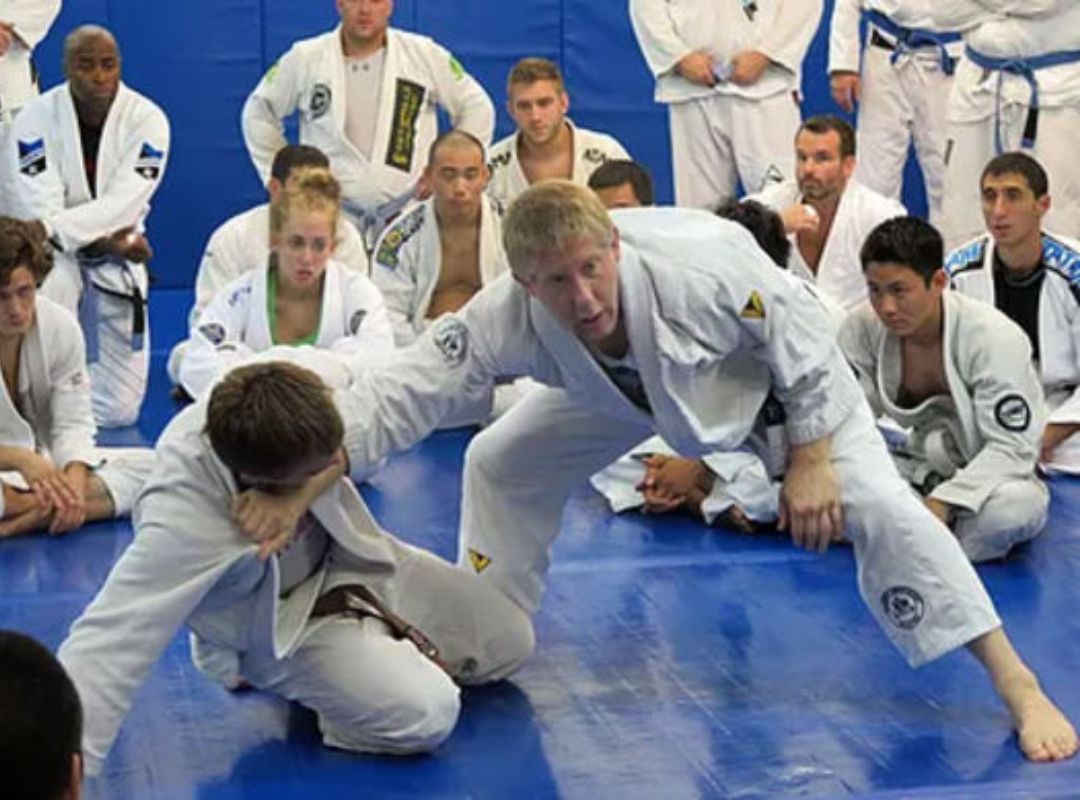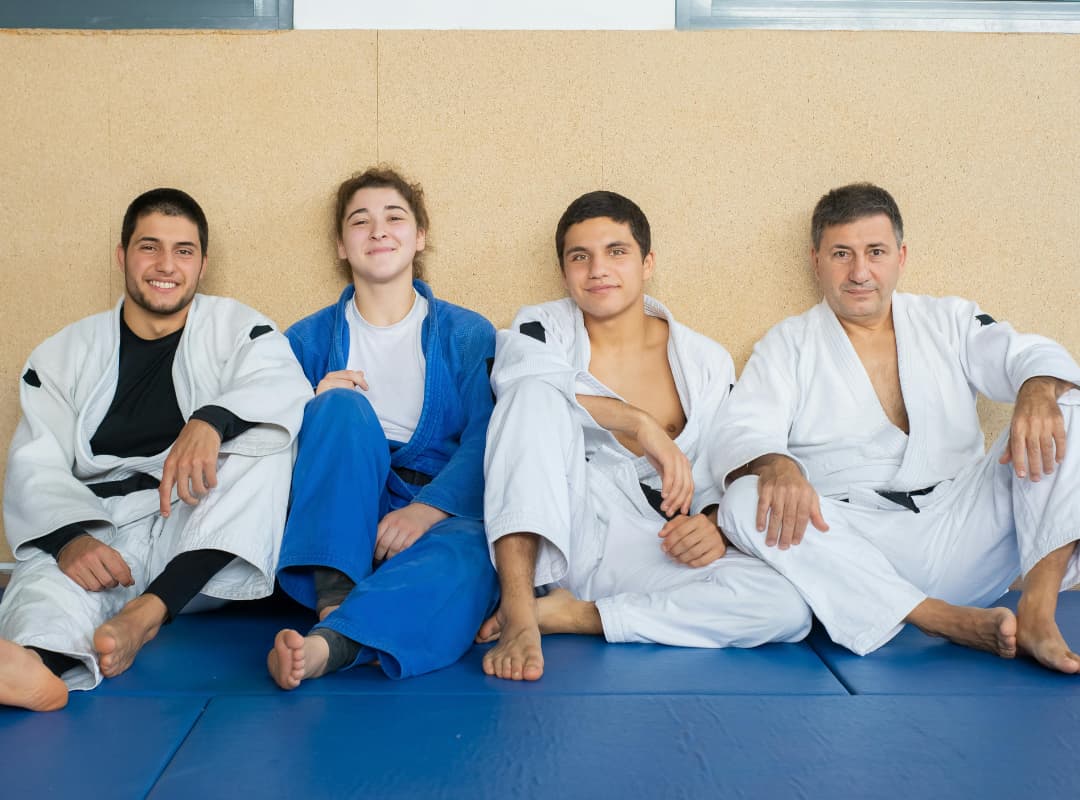
The five elements of Gracie Jiu Jitsu can be divided into the following categories:
- Techniques of self-defense against surprise attacks in the standing position
- Striking techniques
- Grappling
- Throwing techniques
- Philosophy
Although divided opinions dominate in this regard and some claim that in BJJ all techniques fall under the umbrella of self-defense, the division into the five elements of BJJ is nevertheless justified. This is because they function as a strategy. Students of this martial art learn which of the five elements they should use in an emergency. Since attacks are usually surprising as well as unexpected, this aspect in particular, which falls under the heading of surprise attack, requires intensive study.
The five elements show a close connection with the fights in the animal world. There, many fights even end before they have really begun. Fighting in BJJ is not only about applying techniques, but also about analyzing the environment and raising awareness, as well as anticipating certain situations in advance.
In martial arts, the aspect of surprise attack is omitted. Why are there no surprise attacks in martial arts? Quite simply, because in these fights there is a referee present who prepares the fighters for the fight with the words Are you ready? In a martial art that teaches self-defense, like Gracie Jiu Jitsu, this does not apply. Therefore, the martial art BJJ teaches students how to successfully defend themselves against unexpected attacks.
1. Self-defense against surprise attacks
What is the origin of this element that plays an indispensable role in Brazilian Jiu JItsu? The origin of this element lies in Goshin Jitsu, known as the art of self-defense. These techniques are characterized by a special feature: They are created for surprise attacks.
Critics find fault with techniques created for self-defense against attacks with weapons. However, masters of this martial art emphasize that the goal in the first place is to avoid such attacks. And if a surprise attack with a knife, stick or other weapon does occur, a person who has practiced the techniques for surprise attacks in BJJ can still act in an emergency, instead of letting the attack pass defenselessly.
2. The underestimated importance of striking techniques in BJJ
The striking techniques in Brazilian Jiu Jitsu play an important role in terms of self-defense. In these striking techniques, students of this martial art use their elbows, knees, palms and soles of the feet to apply the techniques. These body parts are very good at transmitting physical force. They enhance the effect of the striking techniques. They also reduce the risk of injury.
BJJ striking techniques have an important feature in a direct comparison with other disciplines: they serve as a method to defend oneself in case of emergency and to survive. These techniques of self-defense are not about entertainment.
3. The effective throwing techniques in Brazilian Jiu Jitsu
Throwing techniques act in a fight as an effective method to bring down the attacker. In this way, pain is caused to the one who is thrown, thanks to which the defender can successfully defend himself. Thus, the defender has the opportunity to end the fight on the ground. Moreover, in reality, the case may arise that a throwing technique serves as the best possible response to an attack. It is not always punching techniques that come into question as techniques of self-defense in BJJ.
4. The role of grappling in Brazilian Jiu Jitsu
Grappling acts as an important element in Gracie Jiu Jitsu in terms of self-defense. In grappling, students learn how to protect themselves. Because the goal is to get out of an attack in one piece and make sure that the attacker does not seriously injure the head or any other part of the body.
At this point it is important to emphasize the importance of grappling in Gracie Jiu Jitsu. In grappling in BJJ, students do not voluntarily turn their backs on their attacker at all. In the competitions that take place in a cage, the fighters regularly and voluntarily turn their backs to their opponents. In doing so, they emerge from the fight as winners. This results from the fact that in martial arts no blows to the spine are allowed. In a street fight, where the aim is to defend one’s own life, the situation is different. There are no rules there, and a hard blow to the spine with an elbow incapacitates the person who suffered that blow. For this reason, students in Gracie Jiu Jitsu do not turn their backs to their attacker.
5. The philosophy in BJJ
Students of Brazilian Jiu Jitsu must know the five elements as well as the balance that exists within the five elements. There are fights that cannot be avoided. They must be fought and for this reason BJJ students train self-defense. Nevertheless, in the philosophy of BJJ, a significant question plays the main role: what strategy is important in a context of the elements? What should students know: How do I avoid a fight? Or how do I win a fight?
In BJJ, the principle is: the best fight is the one that students do not fight. Therefore, philosophy plays the most important role of the five elements in BJJ. People cannot successfully defend themselves if they do not feel good spiritually, mentally and physically. As a result, philosophy acts as the basis of the five elements of Jiu Jitsu.
In the event of an attack, a good physical condition is required. However, this depends on the student’s emotional, mental and spiritual stability. In addition, the philosophy of BJJ prepares all students for the most important fight in life. This is the one that all people fight in the course of their lives. This is the fight with the enemy, which each person carries within himself. It is important to defeat it first.
Conclusion
The BJJ combines techniques of self-defense with philosophy. Thus, Gracie Jiu Jitsu focuses on the important link between body, mind and spirit. Therefore, the five elements exist because they meet this challenge of linking the three components in a meaningful way.




